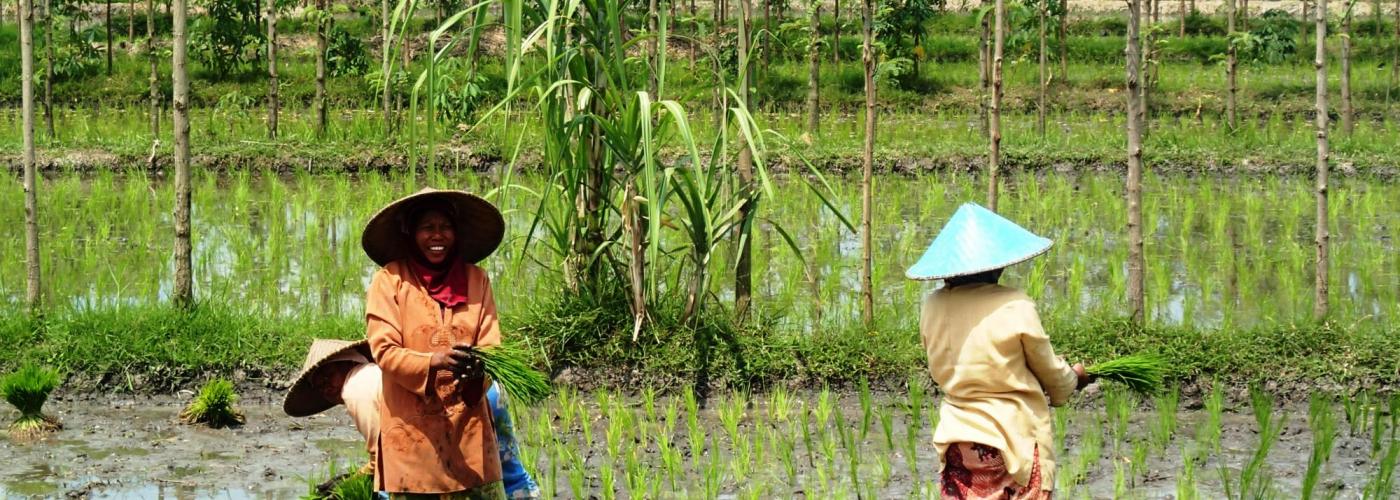Resource: Confronting Organisational Challenges to Mainstreaming Women’s Economic Empowerment in Market Systems Development Programs
Image

This post introduces a case study, Confronting Organisational Challenges to Mainstreaming Women’s Economic Empowerment in Market Systems Development Programs: Lessons from AIP-Rural, authored by Holly Lard Krueger, Giulia Salmaso, and Dhita Larasati. This work was supported by a DFAT funded MSD program in Indonesia. This resource discusses common challenges and strategies to address them; as well as key lessons for program design.
Read the introduction below, and access the full publication online through the Australia-Indonesia Partnership for Promoting Rural Incomes through Support for Markets in Agriculture (PRISMA) website.
Introduction
Since the first formal presentation of the concept of women’s economic empowerment (WEE) in market systems development (MSD) in the 2012 Women’s Economic Empowerment M4P framework discussion paper, the rationale for mainstreaming WEE in MSD work continues to gain conceptual and practical traction, particularly in those programs which have headline WEE objectives and reporting requirements. However, according to the Women’s Empowerment and Market Systems (WEAMS) Framework, ‘many programs are still falling short of… actively influencing market system change [in favour of women]’.
The WEAMS framework discussion paper attributes this inconsistency to several factors – program leadership, culture and systems – which appear to have undermined progress in WEE mainstreaming, stating that ‘many individuals within programmes realise what needs to be done [with regard to WEE], but the organisational ethos and supporting materials do not embody the principles and tools that can make this happen.
This case study adds new insights into existing guidance on WEE in MSD. It does by (1) examining widespread challenges to effective WEE mainstreaming in MSD programs, and (2) providing examples of how the Australia-Indonesia Partnership for Rural Economic Development (AIP-Rural) has tackled some of these challenges (see 1, 2 and 3, below) and continues to work on others (4, 5, 6):
- MSD program bias against WEE – an entrenched perception of WEE as socially rather than commercially driven. This gives MSD staff the licence to do the bare minimum to integrate WEE into program interventions and monitoring activities.
- Unrealistic WEE resource allocation for mainstreaming – understaffing and/or incorrect staffing (such as lack of relevant experience of WEE in MSD) of WEE positions on MSD programs.
- Low senior leadership engagement with WEE – poor understanding of the importance of WEE and its consequent low prioritisation by senior management.
- Staff perception of their responsibility to ‘do’ WEE – WEE is rarely embedded within the daily activities of every staff member of MSD programs and is not perceived as everyone’s work.
- Limited staff capacity to integrate WEE considerations into the intervention design and implementation – staff difficulties in identifying and addressing the gendered constraints which inhibit women from participating in and benefiting from interventions facilitated by the program.
- Inadequate MRM systems to prove and improve the business case for WEE – limited efforts in collecting and presenting the relevant evidence to (1) demonstrate to business partners (and staff) the commercial benefits of inclusive practices within their business activities, and (2) facilitate improvements in program performance and impact.

